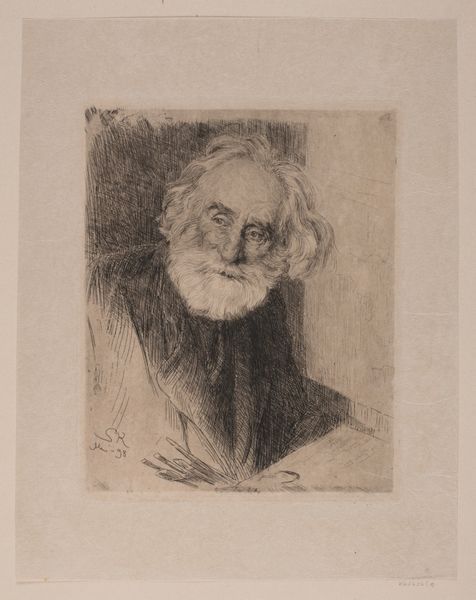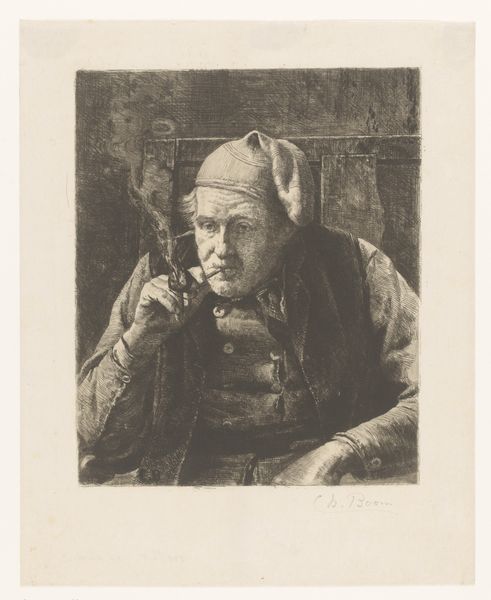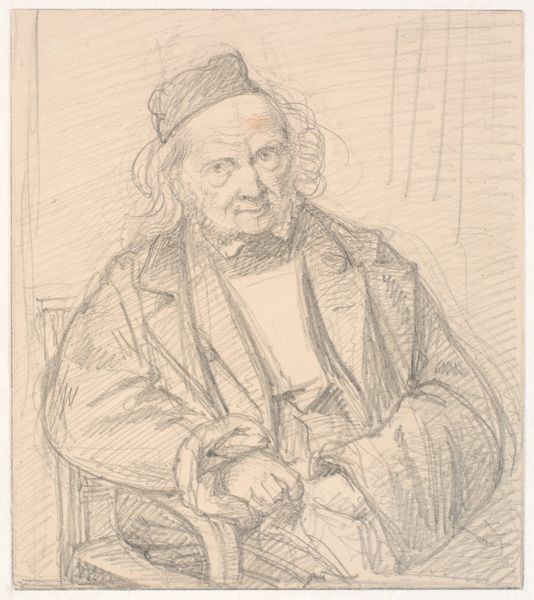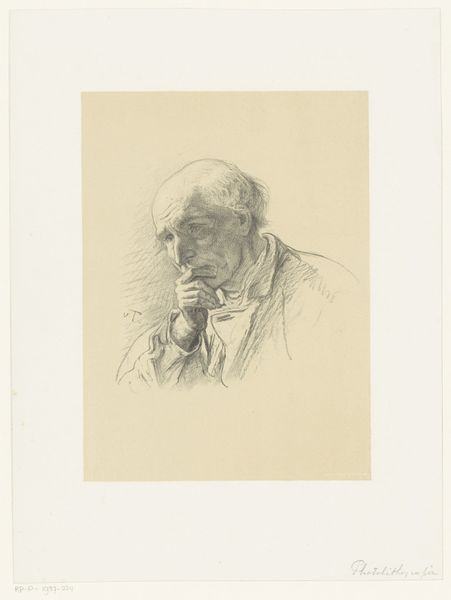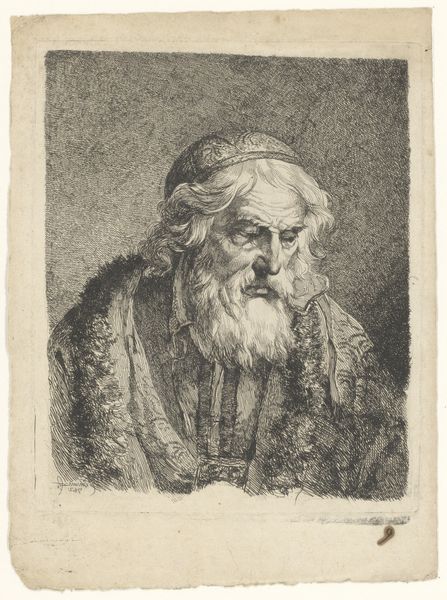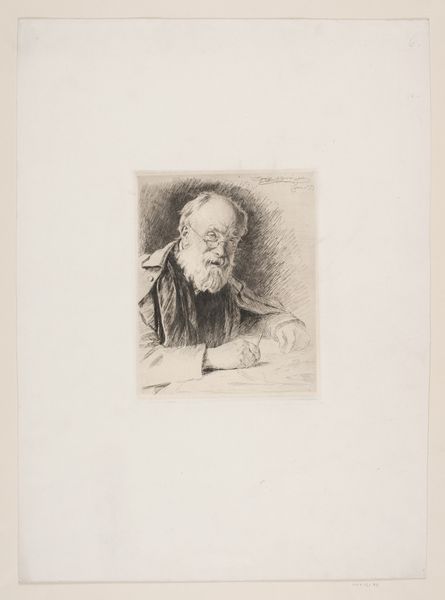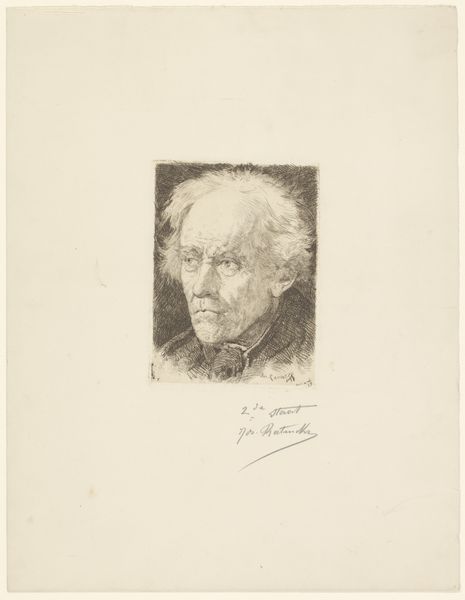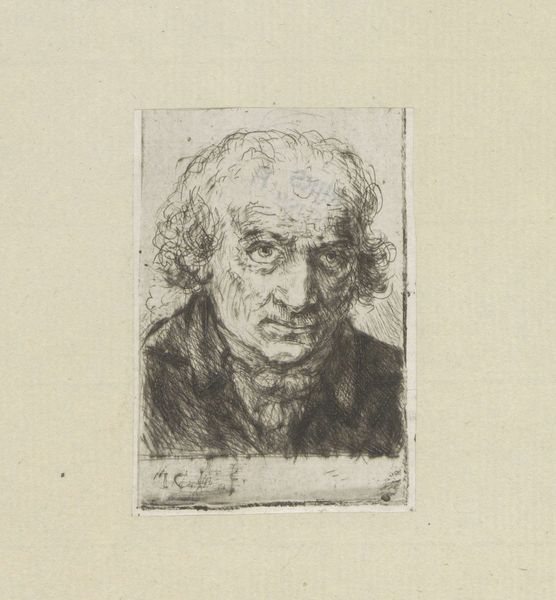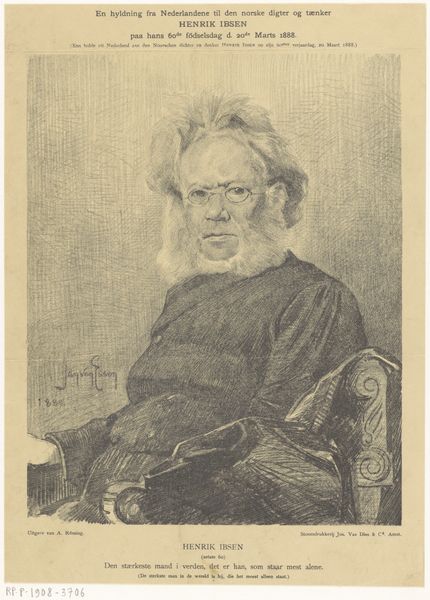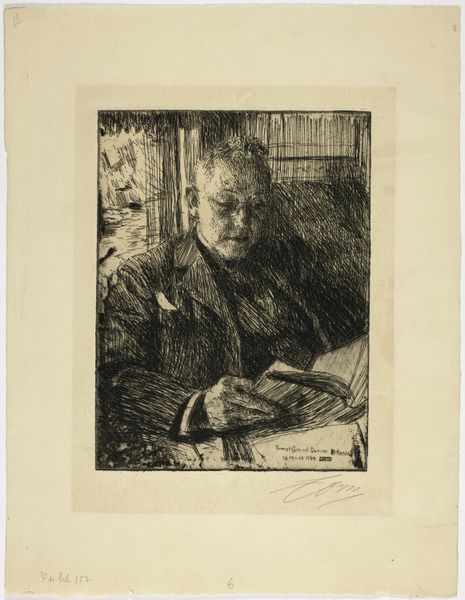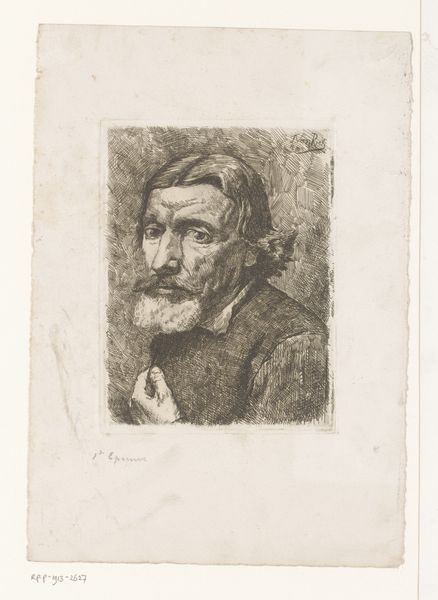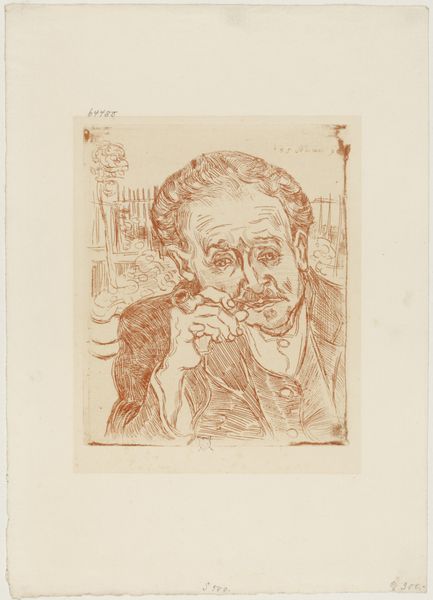
print, etching
#
portrait
#
16_19th-century
# print
#
etching
#
book
#
genre-painting
#
realism
Dimensions: height 201 mm, width 173 mm
Copyright: Rijks Museum: Open Domain
Editor: Here we have "Bibliophile with Antique Books," an etching by Willem Linnig II, created sometime between 1852 and 1890. I’m immediately struck by the man’s weariness, almost as if the weight of all that knowledge is physically bearing down on him. What grabs you when you look at this piece? Curator: Ah, yes! I see a portrait of someone who is indeed deep in thought, maybe lost in the narratives, as you say, and the "weight of knowledge", or, perhaps contemplating the transience of it all. Consider the realism – the artist captures every wrinkle, every strand of hair. But beyond that, I sense a deeper, more melancholic resonance. The books aren't just objects; they are portals to other worlds, reflections of memory and perhaps forgotten dreams. Does it strike you as intimate, almost voyeuristic? Editor: It does. There’s a certain vulnerability to him. The details in his face are so sharp. You feel as though you know this person, like he is more than just a subject. And how important is it that this is an etching, a print, and not a painting? Curator: Precisely! Etching, particularly in the 19th century, offered a unique blend of precision and artistry. Think of the democratization of art. It enabled wider circulation, and made this introspective experience available to a broader audience, almost like whispering a secret across drawing rooms. Do you think it would hold the same impact if it were rendered as a large oil painting, say? Editor: I don't know...maybe the intimacy would get lost. A painting somehow feels more "official," more...public, almost. Curator: Exactly. Etching lends it a delicate touch, almost a whispered confession shared between the artist, the sitter, and now, us, centuries later. Editor: It is like a whisper through time. Now I see the book not just a vehicle, but a time machine, the print-making like transmission from one era to the next. Curator: Beautifully put! And that’s the magic, isn't it? To see something old, but understand something very current about what it means to be reflective and be human.
Comments
No comments
Be the first to comment and join the conversation on the ultimate creative platform.
